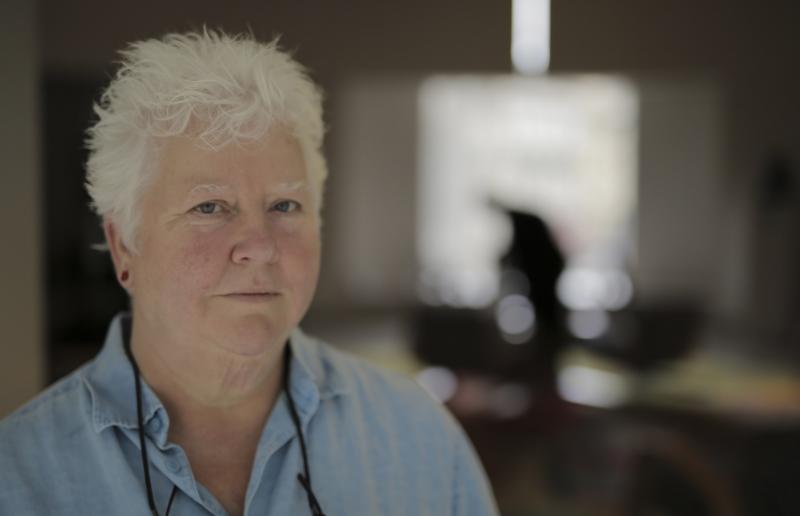Val McDermid: Insidious Intent review - dark and expert crime writing | reviews, news & interviews
Val McDermid: Insidious Intent review - dark and expert crime writing
Val McDermid: Insidious Intent review - dark and expert crime writing
Tony Hill and Carol Jordan are back, on the hunt for the 'Wedding Killer'

Val McDermid has written close on 30 award-winning thrillers and suspense novels, in four series, since the late 1980s, all of them featuring a lead female protagonist. She herself worked as a journalist and a crime reporter, and the atmosphere is grittily realistic.
Insidious Intent is the tenth volume in the only McDermid series to feature a partnership – one both emotional, albeit reticent and repressed at times, and professional. Once again, as in all these novels, the title is a phrase from TS Eliot, here “The Love Song of J Albert Prufrock”:
Streets that follow like a tedious argument
Of insidious intent
To lead you to an overwhelming question…
Oh, do not ask, "What is it?"
Let us go and make our visit.
McDermid, once an English scholar, has a captivating rhythm to her writing – perhaps because of her underlying apprehension of poetry, and affinity with her chosen poet and his ability to plumb human nature. To set the scene, she quotes from De Quincey’s On Murder Considered as One of the Fine Arts. The interplay of understanding and collaboration between the high-ranking policewoman Carol Jordan, and the clinical psychologist, a profiler of criminals, Tony Hill, is crucial.
 Both are middle-aged adults with complex characters and complex histories. They are people of integrity, but all too aware that things are never black and white. Both are heavily compromised by past actions, undertaken perhaps for the best of motives but marred by misjudgements, as well, of course, by the law of unintended consequences.
Both are middle-aged adults with complex characters and complex histories. They are people of integrity, but all too aware that things are never black and white. Both are heavily compromised by past actions, undertaken perhaps for the best of motives but marred by misjudgements, as well, of course, by the law of unintended consequences.
They are utterly human, weighed down with difficult pasts and unresolved grief and conflict. Tony is more or less living in Carol’s renovated barn, once home to her murdered brother and sister. Their relationship is platonic but stressed, as both may want more; she is also an alcoholic who has gone cold turkey and is desperate, as the story unfolds, for a drink. The reader can practically feel her physical and mental pain as she longs for her fix of choice. Carol is also being stalked by an investigative journalist who seems partly motivated by malice. Lurking behind the present sequence of events is a spectrum of past failures and successes in dealing with the most horrible violent crimes, some psychopathic in nature.
The stories of McDermid’s protagonists have been detailed in the first nine books of the series but their huge back history is skilfully alluded to in this latest iteration – so even if you are not already addicted you sort of know where you are.
Carol has resigned her senior police position but has been drawn back to head a new unit, ReMIT: the regional (six police authorities) Major Incident Team, perhaps an embryonic prototype for a British FBI. The narrative is attractively fleshed out with other collaborators and friends, including a gay couple, Paula McIntrye, a top-rate interviewer and member of the new ReMIT team, and Dr Elinor Blessing, a hard-working hospital medic. They are fostering an adolescent schoolboy, Torin, whose mother was murdered, and he too harbours painful secrets. It’s a recurrent and distracting side story, as Torin is blackmailed by a social media stalker.
What nagged at me throughout was my inability to emphathise
We encounter the murderer and discover his modus operandi in the first chapter, and he and his warped motivation are revealed a few pages on – so the whole novel is not a who done it as far as the reader is concerned. But the why has to be determined, however sick it may be, as does how he is to be found, exposed and brought to justice. His tactics are ingenious and he deploys multiple identities, as the police – through enormous amounts of drudge work as well as insight and intuition – duly discover.
He moves, under different names, between various northern towns, his victims chosen at wedding receptions that he has gate-crashed, thus gaining their trust for a short and credible courtship. Focusing on needy single women, he is in his way as clever a psychological profiler as Hill himself. He becomes known to his pursuers as the “Wedding Killer”.
The novel is beautifully crafted in short pithy chapters that shine the spotlight on the murderer, his thought processes and hyper-careful and brilliant methodologies. The characters of his respectable female victims, in their thirties and longing for a partner, make his manipulation credible. The various teams of officers and police professionals include a computer genius alongside dedicated foot soldiers increasingly desperate for a breakthrough to try to make sense of the senseless murders. The warped and evil motivation behind the murders is slowly worked out by Hill until finally a pattern is detected: a twisted pathology is at work, but even with all their investigative methods, there’s no lead that opens a solution. The budget, and the very existence of ReMIT is threatened.
Cue two totally unforeseen concluding twists in the tail, the results of which are presumably to be continued. What nagged at me throughout was my inability to emphathise – that characteristic that makes Hill such a fine psychologist – with either Carol Jordan or Dr Hill. Their angst finally irritated more than it convinced. And the motivation of the psychopath was also thin: but presumably that is a condition that hardly needs believable motivation to act out evil intentions.
- Insidious Intent by Val McDermid (Little, Brown, £18.99)
- Read more book reviews on theartsdesk
The future of Arts Journalism
You can stop theartsdesk.com closing!
We urgently need financing to survive. Our fundraising drive has thus far raised £49,000 but we need to reach £100,000 or we will be forced to close. Please contribute here: https://gofund.me/c3f6033d
And if you can forward this information to anyone who might assist, we’d be grateful.

Subscribe to theartsdesk.com
Thank you for continuing to read our work on theartsdesk.com. For unlimited access to every article in its entirety, including our archive of more than 15,000 pieces, we're asking for £5 per month or £40 per year. We feel it's a very good deal, and hope you do too.
To take a subscription now simply click here.
And if you're looking for that extra gift for a friend or family member, why not treat them to a theartsdesk.com gift subscription?
more Books
 'We are bowled over!' Thank you for your messages of love and support
Much-appreciated words of commendation from readers and the cultural community
'We are bowled over!' Thank you for your messages of love and support
Much-appreciated words of commendation from readers and the cultural community
 Elizabeth Alker: Everything We Do is Music review - Prokofiev goes pop
A compelling journey into a surprising musical kinship
Elizabeth Alker: Everything We Do is Music review - Prokofiev goes pop
A compelling journey into a surprising musical kinship
 Natalia Ginzburg: The City and the House review - a dying art
Dick Davis renders this analogue love-letter in polyphonic English
Natalia Ginzburg: The City and the House review - a dying art
Dick Davis renders this analogue love-letter in polyphonic English
 Tom Raworth: Cancer review - truthfulness
A 'lost' book reconfirms Raworth’s legacy as one of the great lyric poets
Tom Raworth: Cancer review - truthfulness
A 'lost' book reconfirms Raworth’s legacy as one of the great lyric poets
 Ian Leslie: John and Paul - A Love Story in Songs review - help!
Ian Leslie loses himself in amateur psychology, and fatally misreads The Beatles
Ian Leslie: John and Paul - A Love Story in Songs review - help!
Ian Leslie loses himself in amateur psychology, and fatally misreads The Beatles
 Samuel Arbesman: The Magic of Code review - the spark ages
A wide-eyed take on our digital world can’t quite dispel the dangers
Samuel Arbesman: The Magic of Code review - the spark ages
A wide-eyed take on our digital world can’t quite dispel the dangers
 Zsuzsanna Gahse: Mountainish review - seeking refuge
Notes on danger and dialogue in the shadow of the Swiss Alps
Zsuzsanna Gahse: Mountainish review - seeking refuge
Notes on danger and dialogue in the shadow of the Swiss Alps
 Patrick McGilligan: Woody Allen - A Travesty of a Mockery of a Sham review - New York stories
Fair-minded Woody Allen biography covers all bases
Patrick McGilligan: Woody Allen - A Travesty of a Mockery of a Sham review - New York stories
Fair-minded Woody Allen biography covers all bases
 Howard Amos: Russia Starts Here review - East meets West, via the Pskov region
A journalist looks beyond borders in this searching account of the Russian mind
Howard Amos: Russia Starts Here review - East meets West, via the Pskov region
A journalist looks beyond borders in this searching account of the Russian mind
 Henry Gee: The Decline and Fall of the Human Empire - Why Our Species is on the Edge of Extinction review - survival instincts
A science writer looks to the stars for a way to dodge our impending doom
Henry Gee: The Decline and Fall of the Human Empire - Why Our Species is on the Edge of Extinction review - survival instincts
A science writer looks to the stars for a way to dodge our impending doom
 Jonathan Buckley: One Boat review - a shore thing
Buckley’s 13th novel is a powerful reflection on intimacy and grief
Jonathan Buckley: One Boat review - a shore thing
Buckley’s 13th novel is a powerful reflection on intimacy and grief
 Help to give theartsdesk a future!
Support our GoFundMe appeal
Help to give theartsdesk a future!
Support our GoFundMe appeal

Add comment